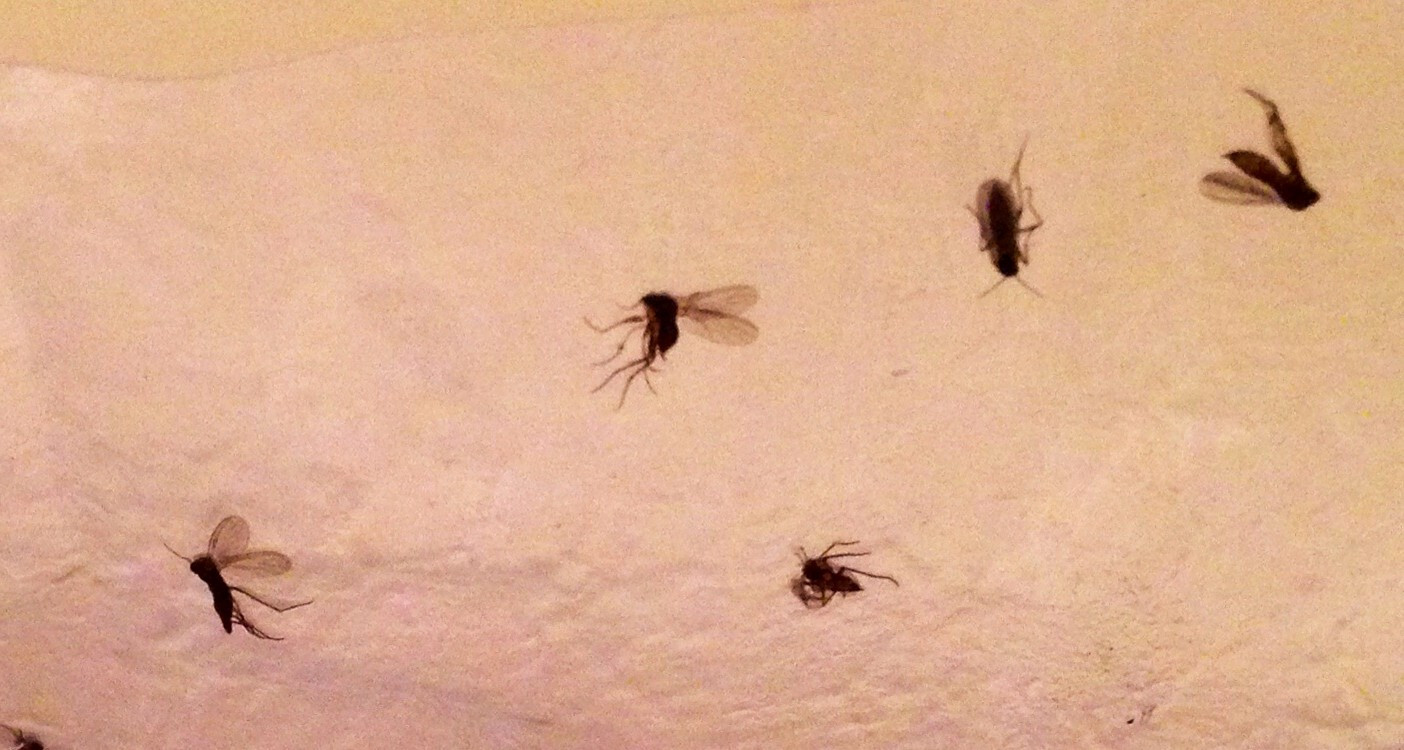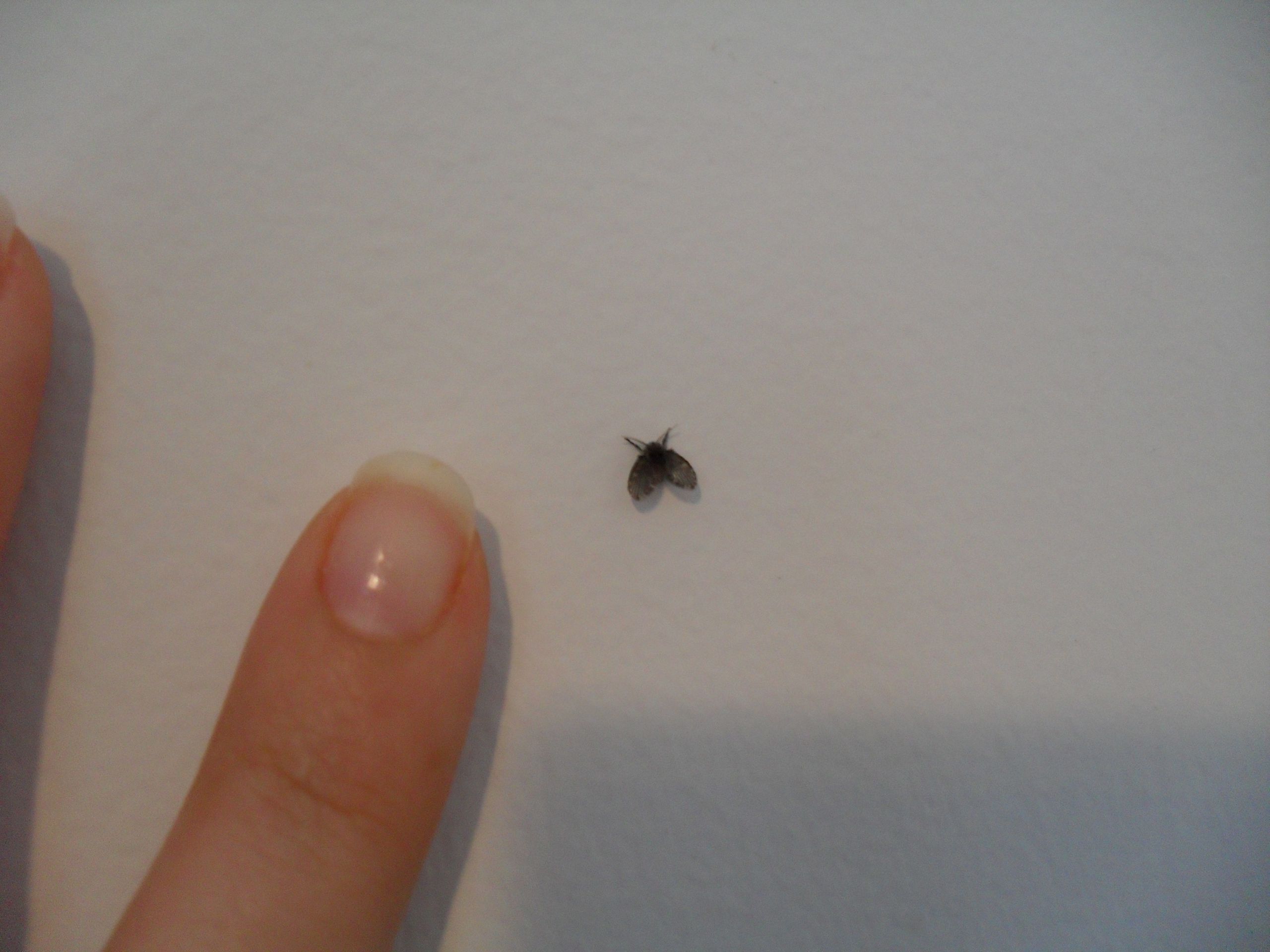Understanding Small Black Gnats: Small Black Gnats In Bathroom

Small black gnats, often mistaken for fruit flies, are a common nuisance in bathrooms, especially in humid environments. These tiny insects can quickly multiply, leading to an infestation that can be difficult to control. Understanding their life cycle, breeding habits, and what attracts them to bathrooms is crucial for effective pest control.
Types of Small Black Gnats Found in Bathrooms
Small black gnats found in bathrooms are typically drain flies or fungus gnats. These two species are often confused due to their similar appearance, but there are key differences.
- Drain Flies: These gnats are commonly found near drains, particularly in bathrooms and kitchens. They are attracted to decaying organic matter, such as hair, soap scum, and food debris, which accumulate in drains. Drain flies are typically dark gray or black, with hairy bodies and wings. Their wings are held in a “V” shape over their backs when at rest.
- Fungus Gnats: These gnats are attracted to moist environments, such as potted plants and damp soil. They are smaller than drain flies and have long legs and antennae. Fungus gnats are typically dark gray or black, with a lighter-colored thorax. Their wings are held flat over their backs when at rest.
Physical Characteristics
Both drain flies and fungus gnats are tiny insects, typically measuring less than 1/8 inch in length. They are dark gray or black, with hairy bodies and wings. The wings of drain flies are held in a “V” shape over their backs when at rest, while the wings of fungus gnats are held flat.
Life Cycle and Breeding Habits
Small black gnats have a short life cycle, typically lasting only a few weeks. They undergo complete metamorphosis, which includes four stages: egg, larva, pupa, and adult.
- Eggs: Gnats lay their eggs in moist environments, such as drains, soil, or decaying organic matter. The eggs are tiny and white, and they hatch within a few days.
- Larvae: Gnat larvae are small, worm-like creatures that feed on decaying organic matter. They can be found in drains, soil, or even in the slime that accumulates on shower walls.
- Pupae: After a few weeks, the larvae pupate, forming a hardened shell. The pupae are typically brown or black, and they remain inactive for a few days before emerging as adults.
- Adults: Adult gnats are winged and can fly. They are attracted to light and moisture, and they often congregate in bathrooms, kitchens, and other areas where there is decaying organic matter.
Factors Attracting Gnats to Bathrooms
Bathrooms are a breeding ground for small black gnats due to several factors:
- Moisture: Bathrooms are naturally humid environments, providing ideal conditions for gnats to breed and thrive. The moisture in the air and on surfaces provides a source of water for the gnats and their larvae.
- Decaying Organic Matter: Hair, soap scum, and other organic matter that accumulate in drains and on bathroom surfaces provide a food source for gnat larvae.
- Poor Ventilation: Poor ventilation allows moisture to build up in bathrooms, creating a favorable environment for gnats.
- Potted Plants: If you have potted plants in your bathroom, they can be a source of gnats, especially if the soil is moist.
Identifying the Source of Infestation

Those pesky gnats are a real pain, and figuring out where they’re coming from is the first step to getting rid of them. These little guys are attracted to moisture and organic matter, so your bathroom is a prime breeding ground.
Small black gnats in bathroom – The key is to understand what attracts them and where they might be hiding. Once you know what you’re looking for, you can start tackling the problem.
Common Breeding Grounds
These gnats are attracted to moisture and decaying organic matter, so your bathroom is a prime breeding ground. Here are some of the most common places to look for signs of infestation:
- Drains: The most common breeding ground for gnats. These tiny insects thrive in the moist, dark environment of drains. They feed on decaying organic matter and can easily multiply in the damp conditions.
- Sinks: Similar to drains, sinks can also provide a breeding ground for gnats, especially if there’s standing water or food particles in the basin.
- Shower areas: The moist environment of a shower area is another prime breeding ground for gnats. They can breed in the shower drain, on the floor, or even in the grout between tiles.
- Toilet bowl: While less common, the toilet bowl can also harbor gnats if there’s standing water or organic matter in the bowl.
- Floor: If there’s a leak or standing water on the bathroom floor, this can also attract gnats and provide a breeding ground.
Effective Control and Prevention Methods

You’ve identified the source of your gnat problem, and now it’s time to get rid of them! There are a variety of methods you can use to control and prevent future infestations.
Cleaning and Sanitation Practices, Small black gnats in bathroom
Thorough cleaning and sanitation are crucial for eliminating gnats and preventing future infestations. Gnats are attracted to damp, decaying organic matter, so keeping your bathroom clean and dry is essential.
- Clean Regularly: Make a habit of wiping down your bathroom surfaces daily, especially around the sink, shower, and toilet. This helps prevent the buildup of food sources for gnats.
- Remove Excess Moisture: Gnats thrive in damp environments. Use a squeegee to wipe down your shower walls after each use, and ensure good ventilation to prevent condensation buildup.
- Clean Drain Traps: Gnats often breed in drain traps, where they can find food and moisture. Clean your drain traps regularly with baking soda and vinegar, or use a commercial drain cleaner.
- Dispose of Trash Properly: Empty your trash can frequently, and ensure that it has a secure lid to prevent gnats from being attracted to the contents.
- Clean Up Spills Immediately: Spills of food or drinks can attract gnats, so clean them up as soon as possible.
Sealing Potential Entry Points
Gnats can easily enter your bathroom through cracks and crevices. Sealing these entry points can help prevent future infestations.
- Inspect Caulking: Check the caulking around your tub, shower, and sink for cracks or gaps. Reapply caulking as needed.
- Seal Gaps Around Pipes: Look for gaps around pipes and vents, and seal them with caulk or weather stripping.
- Install Screens on Vents: Ensure that all vents in your bathroom have screens to prevent gnats from entering.
- Repair Cracks in Walls: Repair any cracks in your bathroom walls to prevent gnats from entering.
Pest Control Methods
There are a variety of pest control methods you can use to eliminate gnats, including chemical and non-chemical options.
| Method | Description | Pros | Cons |
|---|---|---|---|
| Chemical Sprays | Aerosol sprays containing insecticides that kill gnats on contact. | Effective at quickly eliminating gnats. | Can be harmful to humans and pets if not used carefully. May not address the source of the infestation. |
| Fly Traps | Sticky traps designed to attract and trap gnats. | Non-toxic and effective at trapping gnats. | May not be effective against large infestations. |
| Diatomaceous Earth | A natural, non-toxic powder that dehydrates and kills gnats. | Safe for humans and pets. | May not be as effective as chemical sprays. |
| Essential Oils | Certain essential oils, such as peppermint and tea tree oil, are known to repel gnats. | Natural and safe for humans and pets. | May not be as effective as other methods. |
